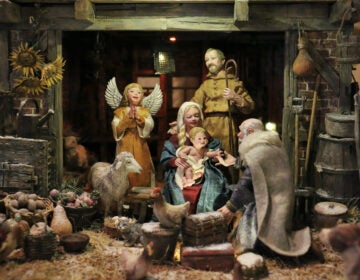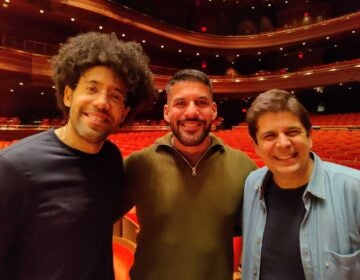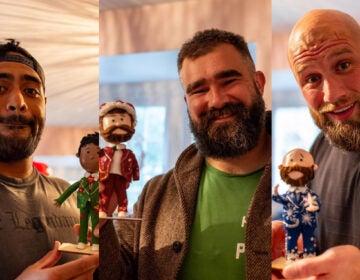Piffaro offers the music of a German Christmas, circa 1500
Piffaro, Philadelphia authentic Renaissance band, will play music of Southern Germany from 500 years ago.
Listen 1:43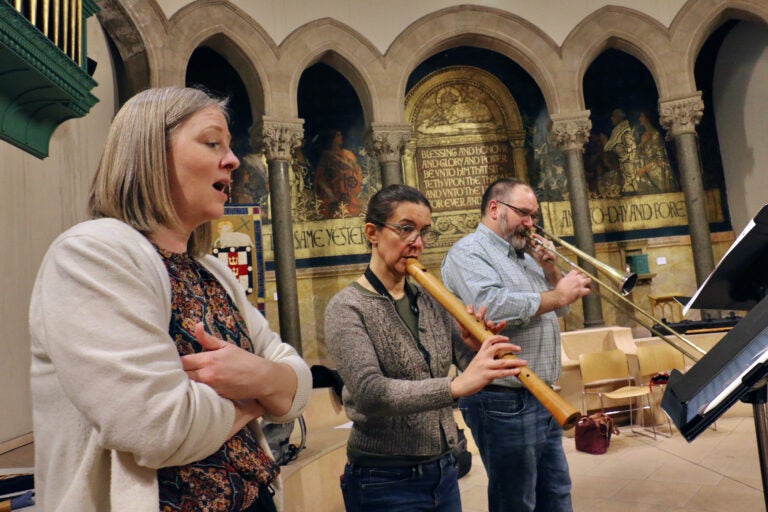
Soprano Clara Rottsolk (left)sings with Heloise Degrugillier (tenor recorder) and Greg Ingles (tenor Sackbut) and other members of Piffaro The Renaissance Band. (Emma Lee/WHYY)
From Philly and the Pa. suburbs to South Jersey and Delaware, what would you like WHYY News to cover? Let us know!
The Christmas Pickle notwithstanding, Germany has given us its share of holiday traditions: the Christmas tree, the song “Silent Night” (“Stille nacht, helige nacht”), the advent calendar, and the holiday pop-up market (Christkndlmarkt) dating back to the 16th century.
Philadelphia’s annual Christmas Village at City Hall is modeled after the annual Christmas market in Nuremberg that can be traced to the year 1530.
“When people came from rural areas to the bigger towns for church service, they would bring goods,” said Thomas Bauer, president of German American Marketing, which organizes the Philadelphia Christmas Village. “They would bring handmade gifts and would offer to people with more money in cities. It was always about like making things, it was about gifts, about unique things.”
Piffaro, the Philadelphia-based Renaissance ensemble, is giving audiences a sense of what such a Christmas may have sounded like. The players perform on historically accurate instruments such as the dulcian, sackbut, and the stringed theorbo. This weekend they will play a series of three concerts of 16th century Christmas music from the area of Nuremberg and the southern part of what is now Germany.

“We are doing some hymns and carols that are familiar to anyone really who loves early music, and Christmas music,” said artistic director Priscilla Herreid. “That Venn diagram is actually kind of big. There’s ‘In dulci jubilio’: It sounds like Christmas, and people might not know that it’s a Renaissance piece.”
Herreid made it difficult on herself by limiting the program to just composers from southern Germany, circa 1500s, such as motets transcribed by the cantor from Augsburg, Adam Gumpeltzhaimer; a setting to the folk song “Es ist ein Schnee gefallen (A snow has fallen)” by Caspar Othmayr of Nuremberg, and a version of “In dulci jubilo (Good Christian Men, Rejoice)” by Hans Leo Hassler, also of Nuremberg.
“I gave myself the challenge of looking not just at Germany, but let me look at these particular places so that I have to find music that I don’t know about,” Herreid said.
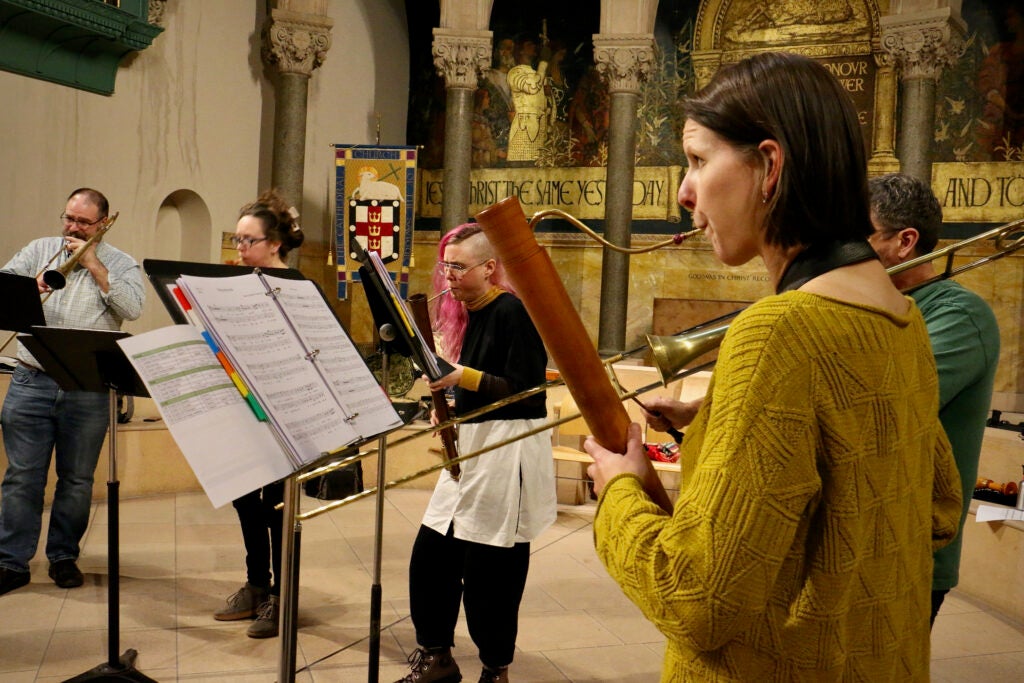
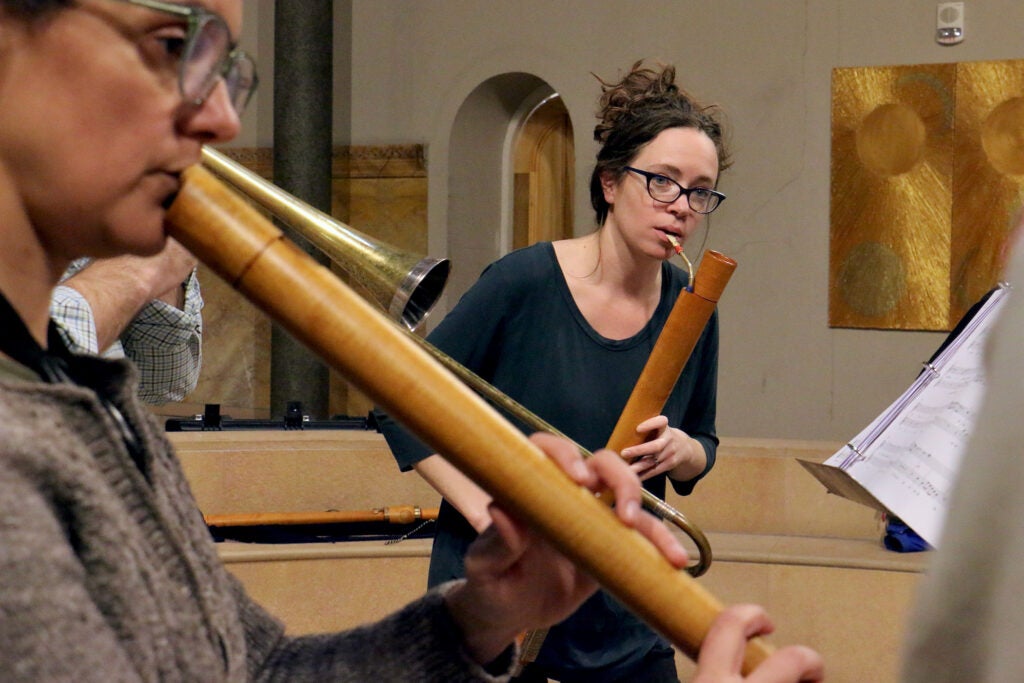
If there could be considered a rock star of German Renaissance music, it would be Michael Praetorius, one of the most prolific composers of the 16th century who served in the court of Wolfenbüttel, near Hanover.
Praetorius’s setting for the Christmas standard “In dulci jubilio” is one of the most famous, but the composer from the northern state of Lower Saxony did not fit into Herreid’s southern program. She forced herself to avoid the familiar.
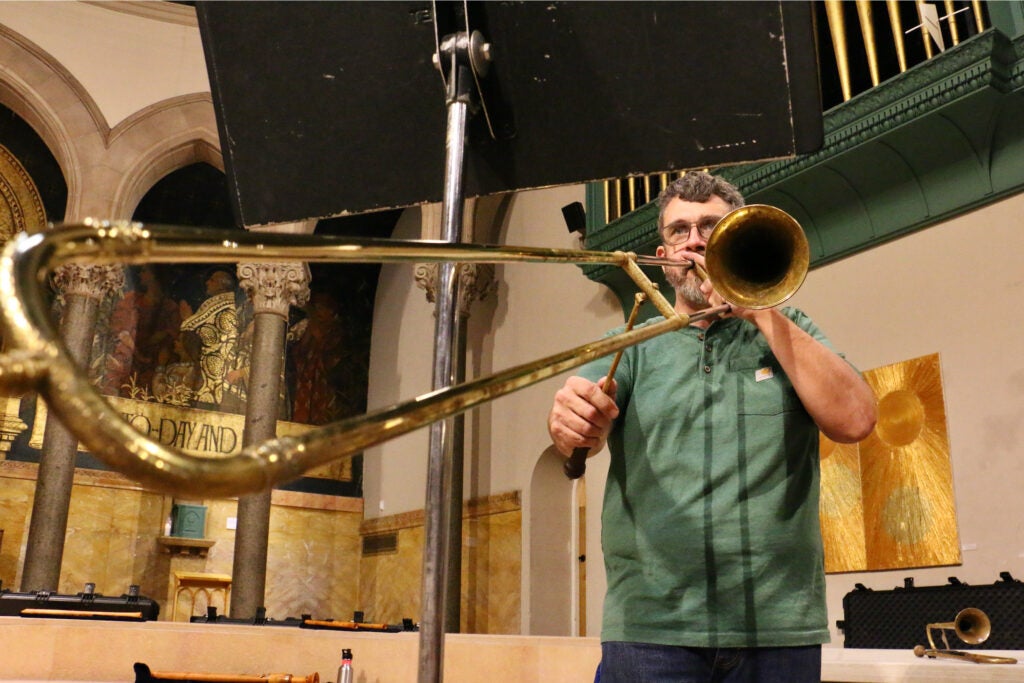
“It’s a way to unearth this huge huge repository of composers that you just don’t hear about too often,” she said. “They’re so many good Renaissance composers that for whatever reason either they don’t have a lot of extant music, or there’s just so many of them, you know, the music hasn’t been published.”
Herreid, who grew up singing traditional German songs in Philadelphia’s Lutheran churches, discovered music she hadn’t seen before while researching this concert.
“Renaissance music is, by far, really good,” she said. “Most of the time you look at something, you go: ‘This is a really good piece of music.’
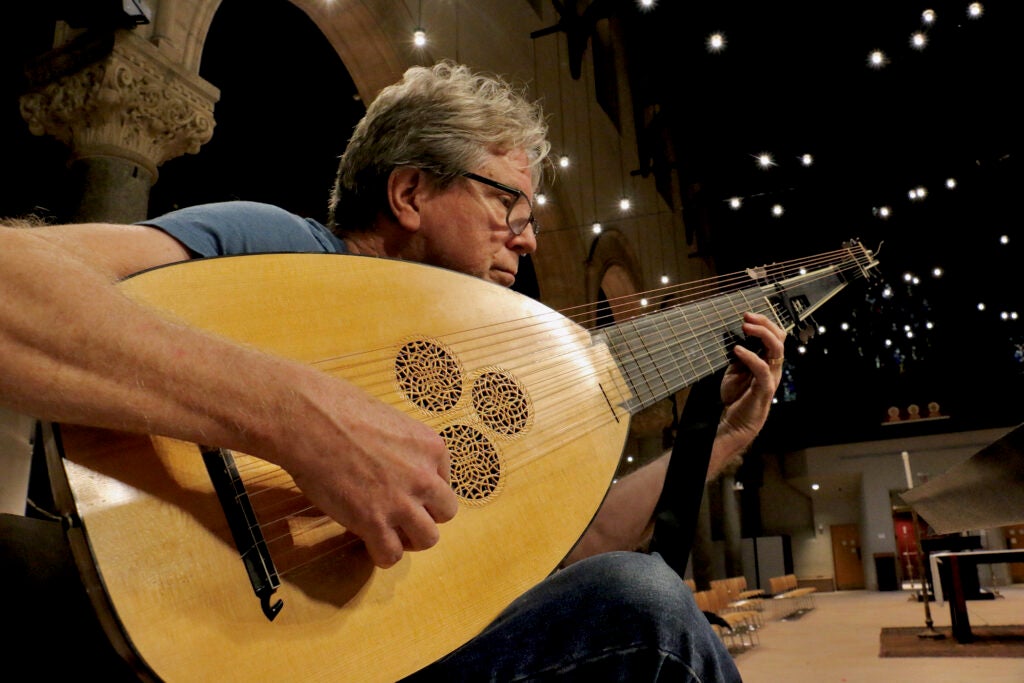
Piffaro will perform “Christmas in Southern Germany” three times this weekend: at the Philadelphia Episcpal Cathedral (Friday), the Presbyterian Church of Chestnut Hill (Saturday), and the Christ Church Christiana Hundred in Wilmington, Del. (Sunday). A streaming version of the concert will be available online starting Dec. 22.
This weekend is the Philadelphia Christmas Village’s German American Weekend, featuring performances by traditional German Schuhplattler dance troupes from the Philadelphia area. The events on Saturday and Sunday are presented by the German Consulate General in New York.
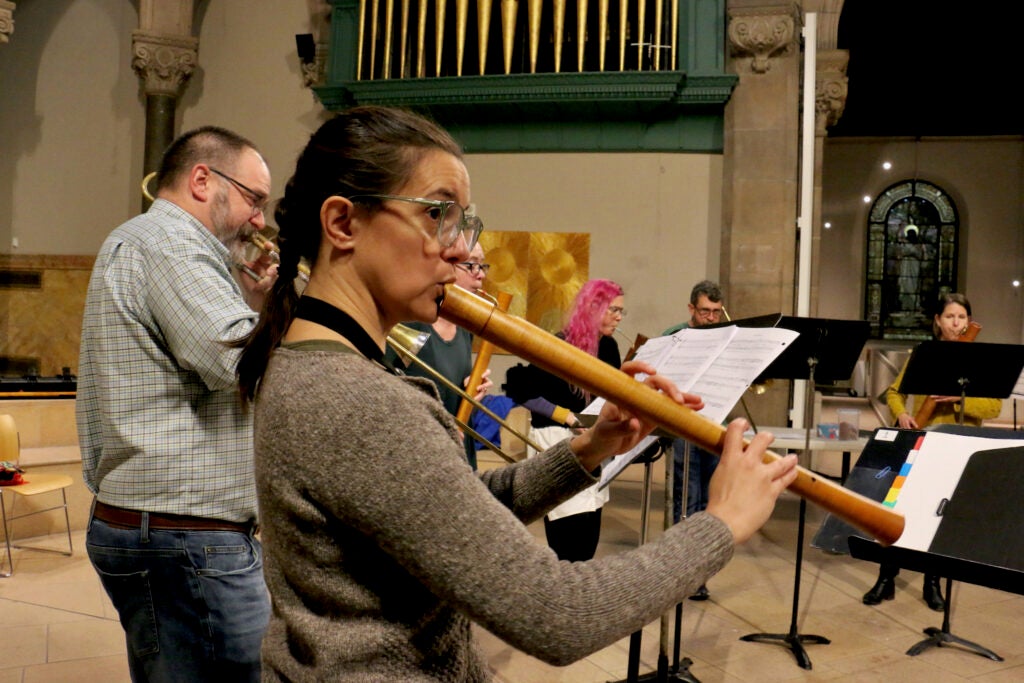
WHYY is your source for fact-based, in-depth journalism and information. As a nonprofit organization, we rely on financial support from readers like you. Please give today.



